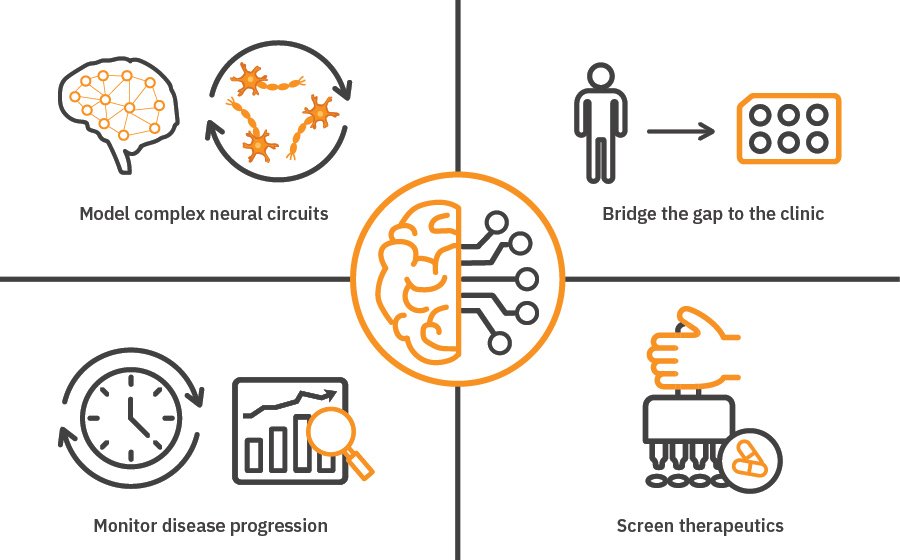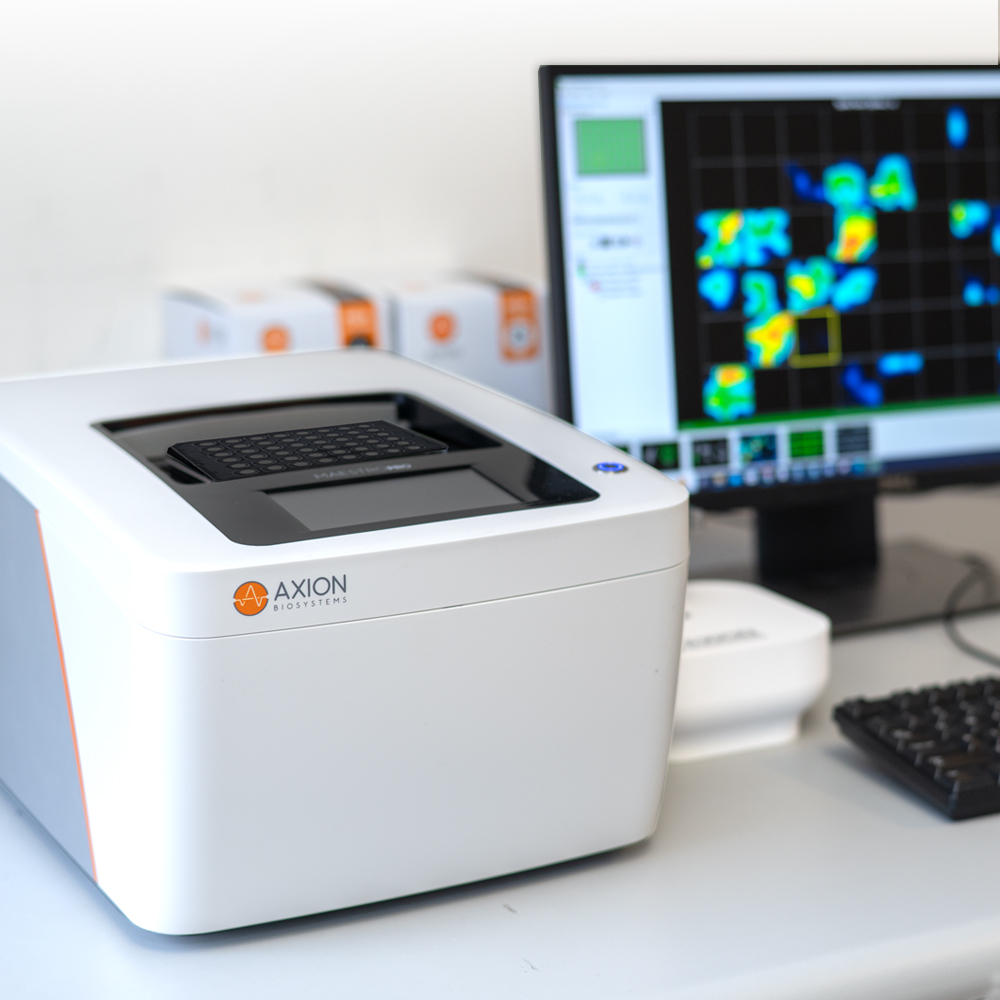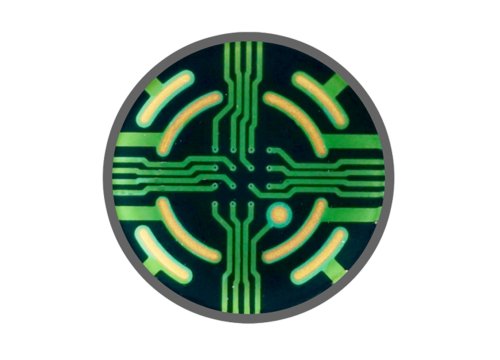
In vitro neural models are powerful tools to study neural function and examine complex disorders of the human nervous system. Neurodegenerative diseases such as Alzheimer’s, Parkinson’s, or ALS result in the progressive degeneration of healthy neurons while neurodevelopmental disorders including autism, ADHD, and schizophrenia alter brain development and impact function. Understanding neuronal activity is the first step in understanding these diseases.
While the biology can be complex, measuring it doesn't have to be. Get the most out of your neural cultures with Axion’s next-generation live-cell analysis tools. Featuring a powerful combination of throughput, resolution, and ease of use, see how we can help accelerate your disease research.
Advantages of live-cell assays for in vitro models of neural disease
See why our live-cell platforms, like Maestro MEA, have become a staple in neurobiology labs:
- Model complex neural circuits – Neural networks are often disrupted in disease. Build in vitro neural circuits and study interactions within cocultures and organoids.
- Bridge the clinical gap – Investigate patient derived cultures in a controlled in vitro environment.
- Monitor disease progression – Watch phenotypes develop over time while preserving the complex structure and communication with noninvasive measurements.
- Screen therapeutics – Test potential therapeutics or screen conditions with a range of throughput options and a simple-to-run assay.


The crucial role of neural function in disease research
Dysregulation of neural activity is central to neurological disorders. Functional assays give context to molecular assays, illustrating the consequences of an altered protein or pathway in a disease model. The Maestro MEA platform is ideal for measuring neural activity — combining throughput, resolution, and ease of use.
Request a demo today and see why.
Explore more neural disease examples:
Alzheimer’s disease
A progressive neurodegenerative disorder characterized by cognitive decline. Learn more >>
Amyotrophic lateral sclerosis
A degenerative disease that affects motor neurons. Learn more >>
Autism spectrum disorder
A neurodevelopmental condition with a wide spectrum of manifestations. Learn more >>
Epilepsy
A neurological disorder characterized by seizures from abnormal electrical activity in the brain. Learn more >>
Glioblastoma
A form of brain cancer that originates from glial cells. Learn more >>
Parkinson’s disease
A neurodegenerative disorder characterized by the loss of dopamine-producing neurons. Learn more >>
Other neurodisease resources
See the latest research, watch webinars, and review publications. Learn more >>
Neurological Disease FAQ
>> Why is measuring neural activity in in vitro disease models important?
Measuring neural activity in in vitro cell models provides deep insights into the pathogenesis and progression of disease, facilitating drug discovery and the development of targeted therapies.
>> What types of diseases are commonly studied using in vitro neural activity measurements?
Researchers use in vitro models to study a wide range of neurological and neuropsychiatric diseases, including Alzheimer's disease, Parkinson's disease, epilepsy, and various neurodevelopmental disorders. These models enable the investigation of specific cellular and molecular changes associated with these diseases and their impact on function.
>> How can MEA be applied in drug discovery and development for neurological diseases?
MEA is employed in drug screening to assess the effects of potential therapeutics on neural network function in a high-throughput manner. Researchers can use MEA to evaluate compounds for their ability to modulate neural activity, restore normal network function, or counteract disease-related abnormalities. This information is crucial for identifying promising drug candidates early in the development process.
>> What are the key advantages of using MEA for measuring neural activity in in vitro disease models compared to other techniques?
MEA offers:
- A comprehensive, real-time view of network activity.
- Noninvasive measurements that preserve the integrity of the in vitro model over long-term experiments studying disease progression.
- A high-throughput, controlled in vitro environment to efficiently assess conditions.
- An easy assay workflow requiring only basic cell culture techniques.
>> How difficult is it to measure neural activity on MEA?
Measuring neural activity on MEA is not difficult at all. After using basic culture techniques to plate your cells, neural activity is measured hands-free from sensitive electrodes embedded on the bottom of the MEA plate while powerful, intuitive software enables easy analysis.
>> What kind of neural cultures can be measured on the Maestro MEA?
MEA is compatible with primary or stem cell-derived neurons. Neural activity can be measured from 2D cultures, organoids or other 3D cultures, and slices. To study the role of glial cells in disease, neural cocultures are frequently used.
>> Can in vitro neural activity measurements be used to identify potential biomarkers for diseases?
Yes, MEA can contribute to the identification of biomarkers associated with changes in neural activity. Using patient-derived cells or tissues, MEA can be used to quantify network patterns and track disease-related changes in function for the identification of patient-specific biomarkers.
For Research Use Only. Not for use in diagnostic procedures.






